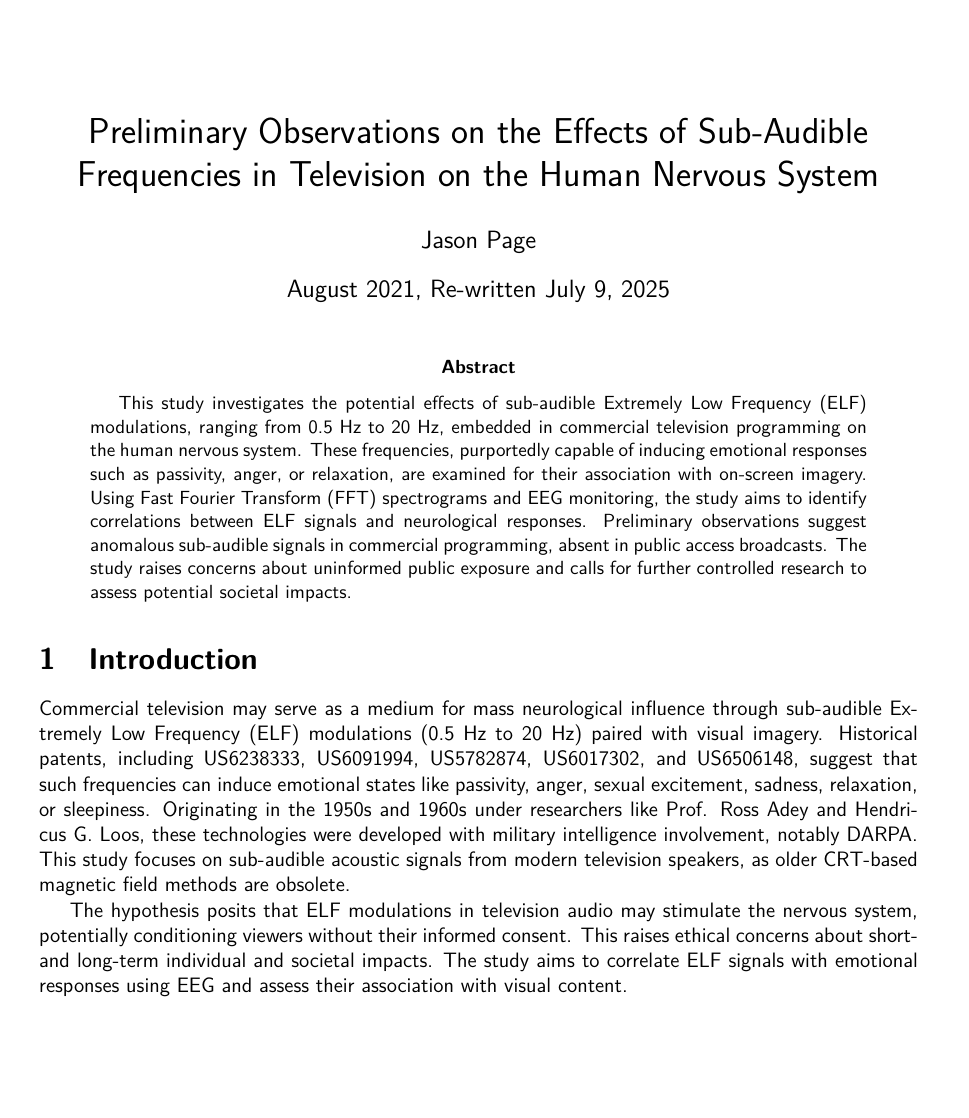Preliminary Observations on the Effects of Sub-Audible Frequencies in Television on the Human Nervous System

This study investigates the potential effects of sub-audible Extremely Low Frequency (ELF) modulations, ranging from 0.5 Hz to 20 Hz, embedded in commercial television programming on the human nervous system. These frequencies, purportedly capable of inducing emotional responses such as passivity, anger, or relaxation, are examined for their association with on-screen imagery. Using Fast Fourier Transform (FFT) spectrograms and EEG monitoring, the study aims to identify
correlations between ELF signals and neurological responses. Preliminary observations suggest anomalous sub-audible signals in commercial programming, absent in public access broadcasts. The study raises concerns about uninformed public exposure and calls for further controlled research to assess potential societal impacts.